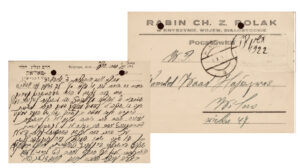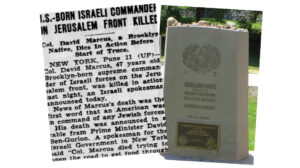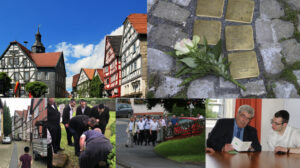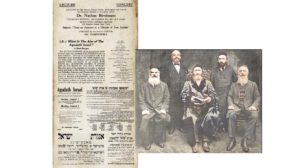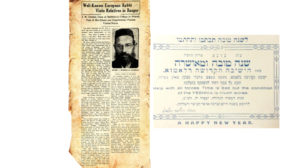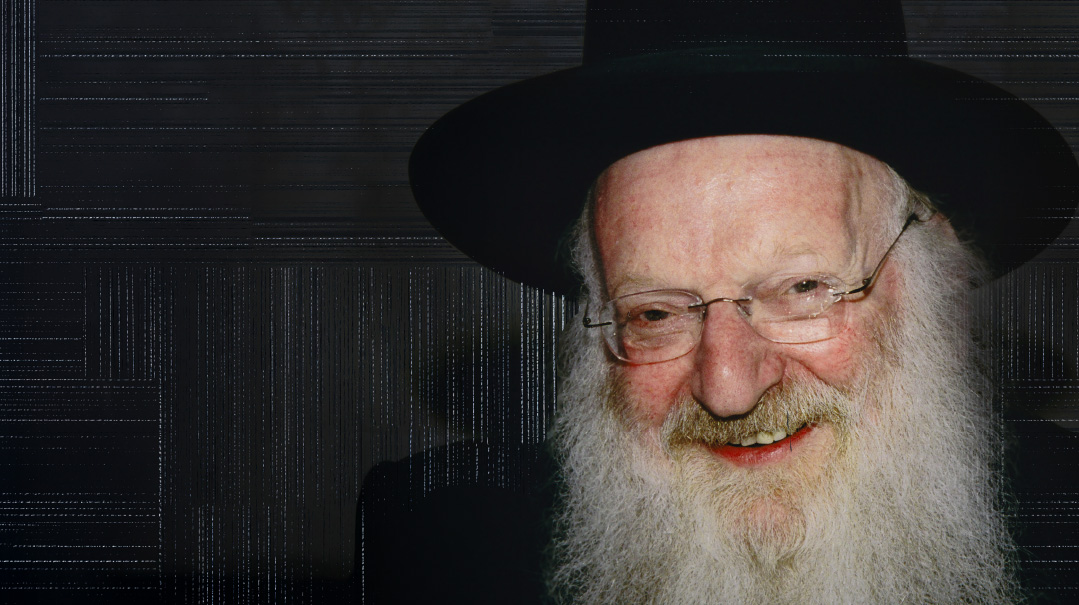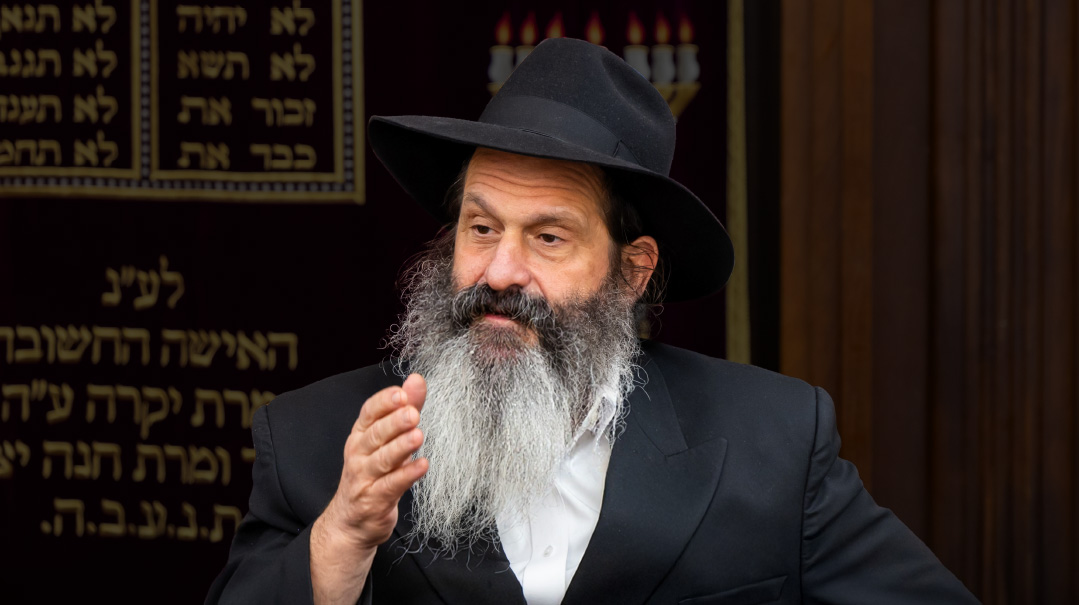Facts on the Ground


F or those who enjoy word-association games mention the word “settlement” especially in the context of the Middle East and you will evoke a wide range of reactions.
For some settlements imply a return to the Jewish biblical heartland a return that is an inalienable right even a mandate from G-d.
For others it’s either an impediment to peace or no longer an impediment to peace but perhaps just unhelpful.
For yet others the word implies apartheid human-rights abuses and Palestinian dislocation.
Some people feel that the settlement enterprise which began shortly after the Six Day War is an unnecessary provocation of the nations while others note that the half-century of diplomatic pronouncements condemning the movement is just lip service to the Arabs. After all every politician of sound mind knows that it’s just one of many issues that men of goodwill could solve — if one day all the bad blood gives way to goodwill.
Until then as the saying goes in the Middle East the settlements are facts on the ground. And today the facts are that some 720 000 Jews or almost 11 percent of Israel’s Jewish population live either in one of the many new Jerusalem neighborhoods populated on territory Israel captured in the Six Day War or in one the 150 new settlements that has sprung up in Judea and Samaria.
While the national-religious movement is the strongest driving force behind the settlement movement chareidim also live in Judea and Samaria though their prime motivations are affordable housing and living in exclusively chareidi communities. Today the chareidi communities of Kiryat Sefer/Modiin Illit (population: 68 372 as of January 1 2017) and Beitar Illit (population: 54 921) are the largest cities in Judea and Samaria. Maaleh Adumim is a distant third with 40 828 people and Ariel (19 787) and Givat Ze’ev (18 117) round out the top five.
Including chareidim scattered among many other yishuvim some 30 to 33 percent of the Yesha population today is ultra-Orthodox.

For Yisrael Medad the welcome mat is extended to anyone. Born in New York Medad graduated from Yeshiva University in 1969 with a degree in political science. He made aliyah a year later and has lived in the Shomron community of Shiloh — the place where the Mishkan stood — for almost 37 years. Medad was the first English-speaking spokesman for the Gush Emunim movement formed in 1974 to advocate for Israeli sovereignty over and settlement of all land captured in the Six Day War.
From 1981 to 1992 he served as a parliamentary aide to Knesset member Geula Cohen and as an adviser of international affairs to cabinet minister Yuval Ne’eman. He also served as director of Israel’s Media Watch from 1995 to 2000 and is a frequent contributor and blogger to op-ed pages in several publications including the Jerusalem Post Arutz 7 and the Los Angeles Times.
Medad today is director of educational and informational resources at the Menachem Begin Heritage Center in Jerusalem a place that celebrates the prime minister who allowed the settlements to thrive. The day I caught up with him for our interview was very apropos to the discussion. It was the 40th anniversary of what’s known in Israel as the mahapach the revolution when Menachem Begin ended almost 30 years of Labor control over the Knesset ushering in the onset of center-right rule in Israel which with a few notable interruptions has continued to this day.
Perhaps you can start by walking us through the beginnings of the Yesha movement. Following the Six Day War when Israel captured all of Jerusalem and the Yehudah and Shomron where did the idea originate that Israel would start building yishuvim and attract people to move there?
I think the first idea would have come from the children of Gush Etzion and specifically Kfar Etzion in the region the Arabs conquered in 1948.
There were four kibbutzim that were destroyed and close to 150 Jews were massacred on the day before the state was created. Many others went into captivity including Rav She’ar Yashuv Cohen from the Old City and were sent out to a desert in Jordan. As it turned out most of the children many of whom were orphaned kept in contact all those 19 years [between 1948 and 1967]. Each year they would reunite at a lookout point in south Jerusalem where they could get a view of their former home. So they more than any other factor were a major part of the Yesha movement. And so immediately after the Six Day War as the famous story goes they went to [Prime Minister] Levi Eshkol and they said: “We want to return home.”
Gush Etzion has always been considered part of the “consensus ” meaning that even left-wing Israelis oppose ceding it to the Palestinians in any possible peace treaty. Part of that is because the saga of Israel’s heroic defense even in a losing cause a story dear in the hearts and minds of Israelis. Is that still the case today?
A lot of people especially millennials are ignorant about Jewish history and Yishuv Eretz Yisrael and act as if everything we came back to in 1967 was new and something we took from the Arabs. Jews have been living in Yehudah and Shomron for the last 1 800 years. If you examine every single decade of those 1 800 years you’ll find Jews doing something in Eretz Yisrael coming to Eretz Yisrael or donating money for those living in Eretz Yisrael. There were Jews living in Chevron almost the entire period especially after the expulsion from Spain. Tzfas had the first printing press in all the Middle East in the 16th century. We managed to take Har Tzion back from the Franciscans in the mid-14th century. That’s how strong Jews were in Jerusalem. So — to return to the story — the original members of Kfar Etzion came back and said we’re going back to Gush Etzion and they set up Kfar Etzion first.
Levi Eshkol had no problem with this?
The story goes that he misunderstood them. He thought they just wanted to go back for Rosh Hashanah and Yom Kippur. So he said to them “Kinderlach you want to go back? Go back!” And that was the beginning.
It took about seven years following the resettlement of Gush Etzion until the founding of the religious and ideological settlement movement Gush Emunim after the 1973 Yom Kippur War. What went on during the interim?
We had the Allon Plan. [Former Israeli general and Minister of Labor] Yigal Allon decided Israel shouldn’t rule over so many Arabs. So he said we’ll leave them the hills. But from what’s now known as the Allon Road on the edge of the Judean Desert down toward Jericho he decided that was land we needed for security so he began to set up Nachal settlements. Today you have a whole line of communities close to 25 along the Jordan River from Tirat Tzvi in the North all the way down to the Dead Sea. The purpose of these communities was to say to the Palestinians that any future Palestinian State doesn’t get to the Jordan River. And the way to ensure that is to put up a kibbutz a moshav or an agricultural settlement.
When Yigal Allon referred to hills that had to be avoided which ones did he mean?
The Shechem area the Binyamin area what we know today as Highway 60. From Jerusalem north to Afula. I used to take the bus sometimes to Afula when I was giving a lecture up north and it went straight through downtown Shechem and then on to Jenin and then Afula. But today we have a lot of support for keeping that area. For years people have been taking pictures of those hills and Tel Aviv is visible from there. You can find pictures of the Azrieli Towers in Tel Aviv as seen through binoculars and sometimes on a clear day you don’t even need binoculars to see what’s going on in Tel Aviv.
“It was Rabin who labeled Gush Emunim as a dissident movement to differentiate it from the mainline establishment authority”
At which point did opposition to this type of settlement start to take root?
It depends who you mean by opposition. If you mean the extreme left, they were there at the very beginning — for instance, Matzpen [The Socialist Organization in Israel] and other groups like Siach [The New Israeli Left, or Smol Israeli Chadash]. But if you’re talking about mainstream opposition, it only really started in 1974–75.
Which coincided with the founding of Gush Emunim.
I was there at the first attempt to establish a settlement at the old Sebastia railroad station before Tishah B’Av in 1974. And the headline in the paper the next day was a quote from [then Prime Minister] Yitzchak Rabin [of the Labor Party]. “They’re porshim.” Porshim can be translated as dissidents, but those who have an ear for the animosity between the Labor movement and the Herut movement [Menachem Begin’s movement] or the Revisionist movement [Jabotinskyites], knows that the Irgun and Lechi were called porshim, from the concept of, “al tifrosh min hatzibbur.” So it was Rabin who labeled Gush Emunim as a dissident movement to differentiate it from the mainline establishment authority.
So Rabin was against the settlement movement even back then?
Oh, yes. Shimon Peres, on the other hand, wasn’t. Until about the mid-1980s Peres was what they called a right-wing Mapainik. Peres managed to get the Kedumim people set up where they are, and he gave them Ofra, the first community in the Shomron, in May, 1975. He allowed a work crew to stay overnight, and eventually it morphed into Ofra because they brought their families. So that was a kulturkampf, a struggle over public memory, over public discourse, over the establishment versus those who were trying to become the establishment, which exists till today. And therefore, Gush Emunim and the whole effort wasn’t only viewed as grabbing land, the left viewed it as taking away our institutions and replacing our educational aims.
yishuv eretz yisrael
“It was part of their school curriculum, and part of their psyche. For them, this was not a foreign or occupied land”
Of course that all changed when Menachem Begin took power after the 1977 elections.
Absolutely. First of all, between 1977 and 1983 when Begin left power, over 80 communities were established. So that period saw a tremendous burst of growth, especially in areas of Yehudah and Shomron that had been kept off the [settlement] map for many years.
Were they less concerned about the security problems that could result from settling near large Arab cities in the hills, as Yigal Allon was, or was the idea of Yishuv Eretz Yisrael an overriding factor for them?
For Menachem Begin especially, and to a lesser extent for the chareidi parties that he brought into his coalition, it was Yishuv Eretz Yisrael. That’s why people misunderstand Begin and how he could return the Sinai to Egypt at Camp David. For him, Sinai wasn’t Eretz Yisrael and it wasn’t recognized by the League of Nations that gave us the Mandate. There’s a famous correspondence between Begin and [former Chief] Rabbi Shlomo Goren about where Nachal Mitzrayim is and where exactly the border is between Egypt and Eretz Yisrael. Begin really got into the intricacies of rabbinic disputation about exactly where Nachal Mitzrayim is. For Begin, first and foremost [Judea and Samaria] was Eretz Yisrael — because it’s Jewish and because it’s ours. And your readers should be reminded that in the 1920s and 1930s, Israeli Jewish schoolchildren who lived here went on hikes all throughout the area. [Secular] Palmachniks used to go to Chevron when it was off-limits in the 1940s because of World War II, and they would get arrested and sit in jail for one or two days because [visiting biblical sites] was part of their heritage. It’s difficult perhaps for someone religious to grasp that someone, in those days, would go to Chevron for a non-religious reason. But it was part of their school curriculum, and part of their psyche. For them, this was not a foreign or occupied land.
After Begin left office in 1983, there was still one more growth spurt under his successor, Yitzhak Shamir. The chareidim helped spur that along, correct?
Yes, but first you have to realize that Shamir was only in for a couple of years and then he and Peres began the rotation between 1986 and 1990. And then, in 1992, Rabin came in. I can tell you of one incident in my hometown of Shilo, which is illustrative. Rabin wanted to stop all the construction there, but he was convinced that for economic reasons, a certain number of homes — about 120 — where construction had just started, should be finished because it would cost more to halt construction. And once Binyamin Netanyahu took over as prime minister after Rabin’s assassination, he named Meir Porush [United Torah Judaism] as a deputy housing minister. Porush gave Shilo and other communities the opening to declare certain adjacent areas as part of their existing communities. So even today, some 20 years later, we have been able to build there because the status, or the zoning, of the area was such that we didn’t need permission of the Supreme Court or need to worry about Peace Now’s appeals to the Supreme Court.
By 1993, the Oslo process began and that’s when the settlement enterprise faced its stiffest challenge. Aside from international pressure, what domestic social forces were working in the background that changed people’s minds about the value of expanding settlements?
It’s my opinion there were two events: The Jewish Underground, whose members were arrested in 1984, which gave the whole movement a black name. And then the outbreak of the intifada in 1987.
Can you expound on both of those?
In terms of the so-called Jewish Underground, it was difficult for mainline, mainstream Israel to identify with violence, such as Jews using violence against an Arab school, or plots against the Temple Mount, or Arab buses. No matter what the background was, and whether Arab violence against Jews precipitated this, it was a very difficult moment. The Left, of course, said this is what [the settlers] are really about. They’re about terrorism, they’re about violence, they’re about stirring up trouble, they’re about disobedience to the laws of the state. They’re religious so they don’t accept the institutions of the state.
The second point was when the Arabs in 1987 began an intifada that lasted into 1993. Families suddenly began seeing that soldiers — their sons — were not just patrolling, but were fighting stone-throwers, getting hurt, and in some cases, shot and killed. That enabled the opposition to say we don’t want the territories. They’re too much of a headache, they’re too much of a problem, and that has stayed with us today. To some, just the idea that Jews are an occupying power is unacceptable from a Jewish point of view.
I would add that people also wanted to give the Oslo Accords a chance. At least for the first two years, from 1993 to 1995. There’s always a dichotomy here that if you look at all the public-opinion polls, the majority of Israelis want peace and they’re ready to yield something. Of course, the pollsters don’t ask them specifics, for instance if they really want to yield Gilo or Shilo. That they don’t get into. On the other hand, when the pollsters ask, “Do you think there is going to be peace?” most of them say no. Because they’ve seen and experienced the Arabs not only in 1993, but from 1920, from 1937, 1947. So I add the peace process on as an element that either halted, postponed, delayed, or discredited the idea that we should be returning to all parts of Eretz Yisrael.
But the settlement movement didn’t just sit back and take it on the chin. They’ve fought back, but perhaps not hard enough or not in the right way?
I don’t think they fought back strongly enough, especially at what is called the Jewish Underground. And the Left is very good at taking advantage and turning things upside down. And the media follows because the media wants to sell newspapers more than anything else. You see stories every week about Jewish domestic violence, but do you ever do a story on honor killings inside the Palestinian Authority? They have a big problem with this, and it just so happens that there is a women’s group there that’s trying to solve the problem. Does the Israeli press extend any help to these women?
Of course, another major element we can’t forget is the assassination of Yitzchak Rabin in 1995, which was, and still is blamed on incitement by rabbis, without any proof. All this was enough to blacken, to denigrate, to put down, and of course, injure politically the movement to return to Yehudah and Shomron.
(Originally featured in Mishpacha Issue 661)
Oops! We could not locate your form.

